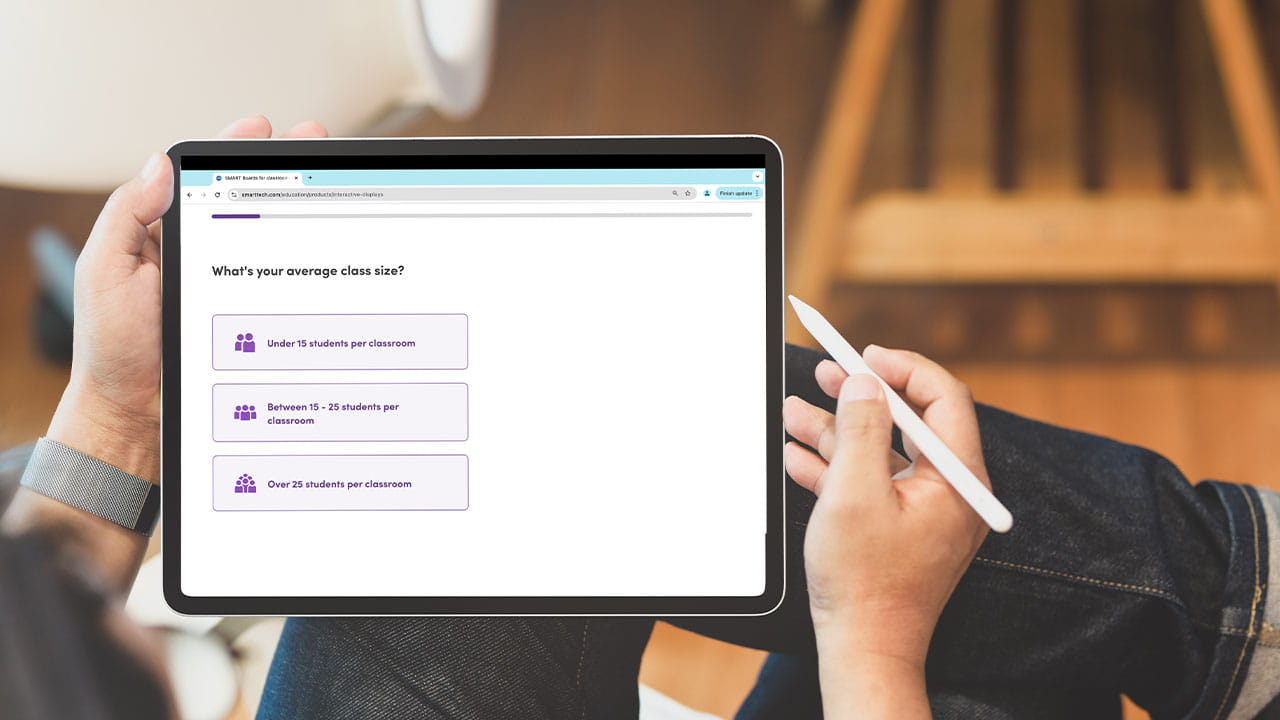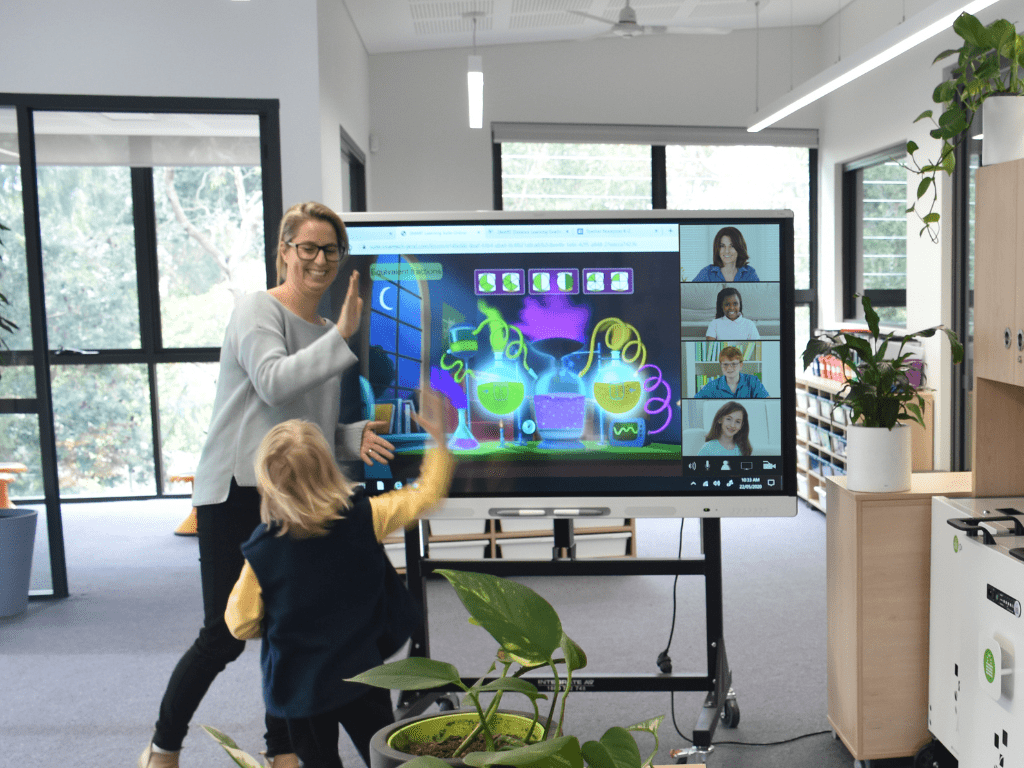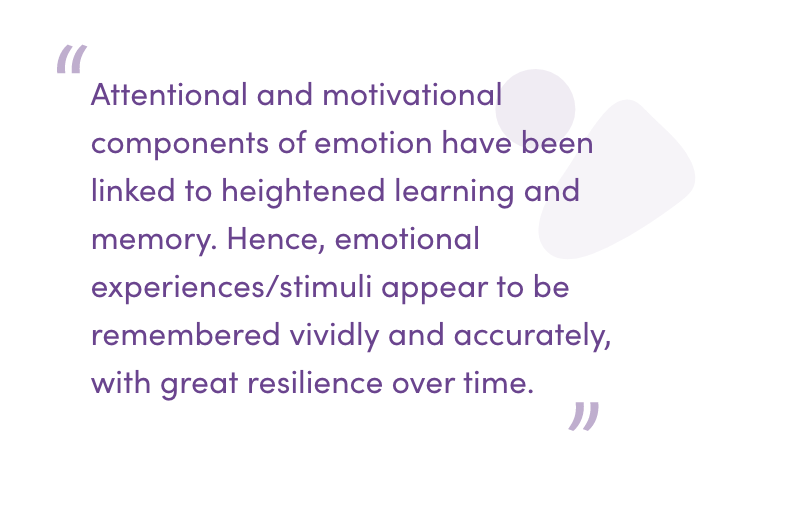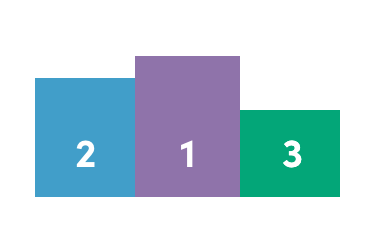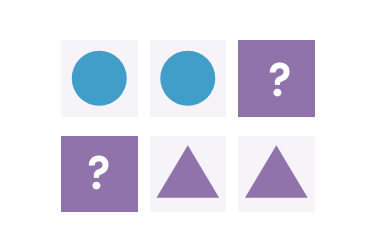We all love to play, from the time we’re infants. Now, gamification has found its way into nearly everything we do, from collecting coffee shop stamps to tracking learning module progress. Why is gamification so popular? Because it works. Why does it work? Because it triggers powerful emotions.
Delight. Anticipation. Determination.
And these emotions can have a substantial effect on learning.
Why does game-base learning works?
Game-based learning means that we use games to enhance the learning experience. Playing games holds learners’ attention in engaging and interactive ways, making it easier to learn new things or build understanding of concepts.
Recent research reveals how emotions heightened by gamification support learning.
Put simply, linking emotion and learning improves our ability to retain what we’ve learned.
What’s more, game-based learning optimizes the brain's ability to process new information from a range of sources.
- audio-visual presentations
- minimized bites of schematized information
- short time lapses
- repetitive patterns
Because the consequences for getting something wrong in a game are minimal, games provide students with the opportunity to embrace wrong attempts and try and try again until they get it right.
Using gamification in your classroom
When you gamify learning, students can tap into their emotions while working toward learning goals. Games foster healthy competition, increase problem-solving skills and build perseverance and teamwork.
Students feel emotionally involved – for example, they get emotionally invested in competitive games against classmates. The excitement of a win or the lesson learned from a defeat connects learning to emotion.
Another advantage is that game-based learning activities often provide instant feedback and instant gratification. Students take pleasure in the accomplishment of getting an answer correct or upleveling in a game. This emotional reaction supports learning retention.
Common games in Education
Sorting games
Students find common attributes or characteristics with concepts or ideas that support learning through classification, grouping, and logical thinking.
Matching games
Students can match related items to enhance recall, one-to-one correspondence, and working memory.
Healthy competition
Students take turns answering questions or completing tasks until one team wins.
Memory games
Students match pairs that have a connected idea to improve concentration and strengthen short-term and visual memory.
How to start with the game-based learning
1. Start outside of lessons
The best way to get started is to provide students with a variety of games that aren’t related to lesson delivery. Try introducing games during downtime, at recess or in the schoolyard.
2. Introduce familiar games within lessons
Next, games that meet your students’ levels and learning needs can be worked into teaching. Use traditional, age-appropriate games such as decks of playing cards, store-bought and homemade board games or online.
Some practical ideas and examples of game-based learning in the classroom include:
- Whole-group games: Create teams that compete to answer questions in preparation for an assessment or learning task.
- Small group centers or stations: Set up independent games that allow problem-solving with peers and use critical thinking skills.
- Students initiate the game, teach classmates how to play, keep score, compromise and learn to use good sportsmanship.
4. Beyond the classroom: Students can build foundational skills at home independently or with support from a sibling or family member.
Multiplayer games allow students to practice what they learned in the classroom and involve the whole family. Self-paced games provide practice opportunities for a variety of skills, including sequencing, sorting, matching and more.
5. In the Parent Resource Center: Students can borrow games to play at home to reinforce learning and increase parental involvement. If you use cloud-based gaming tools and learning management systems that parents can access, post links so that students can play with their families.
See how Lumio can help with gamification in your classroom
Blended learning components: voice, choice, place, pace.
Blended learning is a formal, personalized education enhanced by technology to give learners a voice and choice in their mastery-based education, in a flexible physical place at a pace partially determined by data and feedback.
Voice: Every student has input into their education, starting at the earliest levels, including assessment criteria and interest areas, and even policy.
Choice: Learning isn't restricted to one teacher's pedagogy. Teachers provide learners with options of activity, assignments, content and leadership.
Place: Learning activity isn't limited to any one physical location, and happens both on and offline and no longer requires rows of desks.
Pace: Teachers enable self-directed, mastery-based learning with individualized learning velocity.
Blended learning components: voice, choice, place, pace.
Blended learning is a formal, personalized education enhanced by technology to give learners a voice and choice in their mastery-based education, in a flexible physical place at a pace partially determined by data and feedback.
Voice: Every student has input into their education, starting at the earliest levels, including assessment criteria and interest areas, and even policy.
Choice: Learning isn't restricted to one teacher's pedagogy. Teachers provide learners with options of activity, assignments, content and leadership.
Place: Learning activity isn't limited to any one physical location, and happens both on and offline and no longer requires rows of desks.
Pace: Teachers enable self-directed, mastery-based learning with individualized learning velocity.
